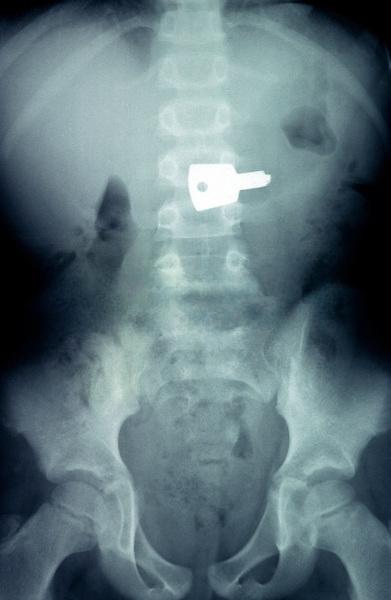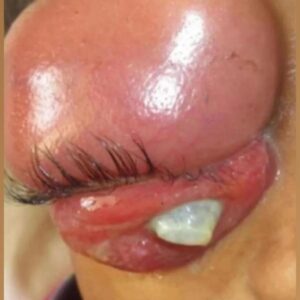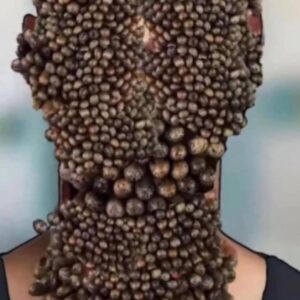Babies, toddlers, and preschoolers in particular are naturally curious. All they can get their hands on, they want to touch, smell, and yes, even taste. When children inadvertently swallow something they shouldn’t have, their curiosity can put them in danger.
The majority of items that children swallow can go through the digestive system without any problems. Buttons, magnets, and sharp objects are a few objects that can seriously harm internal components.
Bradley Barth, M.D., a professor at UT Southwestern and a gastroenterologist at Children’s HealthTM, offers guidance to parents on what to do and what to know if they suspect their child has swallowed something foreign.
How do I know if my child swallowed something?
When you look across the room at your child and realize they’ve put something small in their mouth, it can be a frightening moment. In other cases, it’s unclear if your child ingested anything. Your child may begin exhibiting telltale signs, or you may notice a small item missing.
Parents are usually able to determine whether their child has swallowed something by acute symptoms like sudden drooling, vomiting, coughing, or pain in the chest.
Bring your youngster in for an examination at the ER if:
– You witness your kid ingest a button battery, magnet, or other pointed object.
– You believe your child may have swallowed something foreign because they are exhibiting severe, immediate symptoms like:
Watch your child for at least 24 hours if you think they may have swallowed a non-toxic foreign object, like a small coin or bead, even if they do not exhibit any severe symptoms right away. Unsymptomatic object stuck in the gastrointestinal tract happens occasionally. Contact your doctor as soon as possible if any of the following symptoms appear:
– Vomiting or drooling
– Gagging
– Not eating
– Coughing
– Chest pain

Will my child require surgery to get rid of an object, like a penny?
Certain foreign objects are easily absorbed by the digestive system. In other cases, the esophagus may become blocked by an object. In these situations, an endoscopic procedure will be required by the physician to remove the object. Emergent endoscopy is necessary when ingesting certain objects.
Endoscopy should be performed as soon as possible if there are button batteries or magnets, especially if there are several magnets. These items have the potential to seriously harm a child’s digestive system and esophagus.
According to a 2022 study published by the American Academy of Pediatrics, there was a notable rise in emergency room visits linked to button batteries between 2010 and 2017. If serious complications are to be avoided, early treatment is required.
According to Dr. Barth, “a swallowed button battery is a true emergency and can cause life-threatening complications if stuck in the esophagus.” “The family needs to seek medical attention right away, even if the child appears fine after swallowing the battery, as it is impossible to determine whether it has passed into the stomach without an x-ray.”
In the event that the swallowed object is not a button battery or several magnets and your child shows no symptoms, your physician may advise a “wait and see” strategy in which X-rays or other imaging tests are used to track the object’s progress. It typically takes a foreign object one to two weeks to go through the digestive system. Your child’s physician might suggest that you see a pediatric gastroenterologist for additional assessment if the object is still there after four weeks. The location of the object will determine whether endoscopic removal is advised.
How is endoscopic removal of foreign objects accomplished?
Generally speaking, endoscopic procedures can be used to remove objects that children have swallowed. This minimally invasive procedure involves carefully inserting a thin, flexible tube into the child’s mouth and gastrointestinal tract, along with a tiny camera and light attached to the end.
The surgeon can see the gastrointestinal tract as it passes through the esophagus and reaches the foreign object thanks to the camera and light. To carefully remove the object, tiny instruments can be inserted into the tube. In addition, the gastroenterologist looks for any damage to the gastrointestinal system.
Prioritize your safety at all ages and throughout the years.
To find ways to childproof the house, parents should examine every area of it from their child’s point of view. Things that you had not previously noticed will come to your attention: things that should be moved out of the room or out of children’s reach.
Keep loose change out of reach at all times. Surgery is required to remove the most common objects that children swallow, which are pennies, nickels, dimes, and quarters.
Certain seasons of the year may present higher risks. Around the holidays, there are more children in the emergency room. Numerous tiny toys, decorations, and even greeting cards come with small objects or button batteries inside of them.
It’s also critical to keep in mind that emergencies can occur in an instant. Never leave your child alone, even if you’re just rushing to use the restroom or the next room.
The last piece of advice is to continue talking to kids about the risks of ingesting non-food items even as they approach adolescence.
It is important to remind teenagers of the risks associated with ingesting poisonous substances. Now is the perfect moment to discuss with them the risks associated with purposefully consuming hazardous materials or mindlessly adhering to the newest destructive online challenge. Regular small talk with your child helps to build an open relationship and reassures them that you are there for them, even if they don’t seem to want to hear it.


